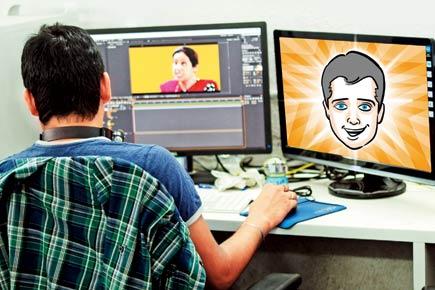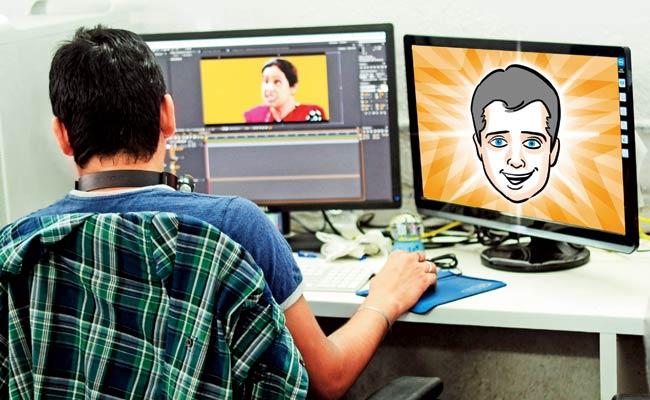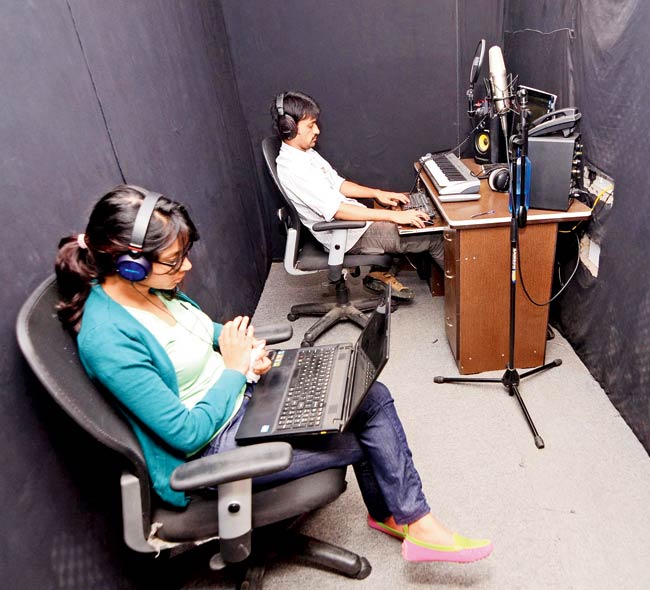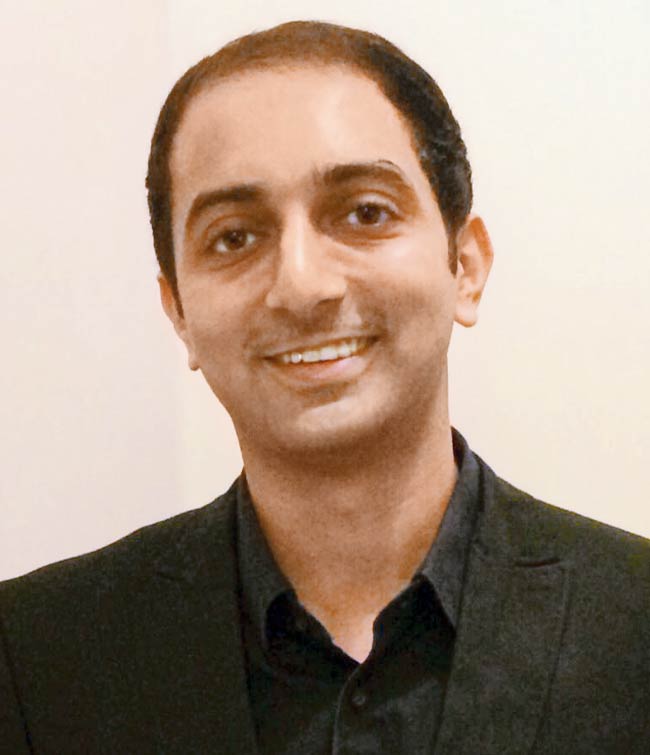With 55 pc Indians watching videos online everyday and with a 27 pc increase in online audience over the last 12 months, digital media companies are reaping in the benefits. Soma Das goes behind the screen to find out what it takes to be an online sensation

The Culture Machine Studio
The numbers say it all: there are around 58 million Youtube users/ viewers in India and 33 million Twitter users. Of this, 38% of the traffic comes from mobile phones. There has been a 27% increase in online Indian audience in the last 12 months itself. With such numbers, India is now in an enviable position to exploit the digital domain. Maximising on this are companies that optimise digital content.
ADVERTISEMENT

The Culture Machine Studio at Malad. Pic/Kaushik Thanekar
Take for instance, the 11-month-old digital media company Culture Machine in Malad, which is also a multi-channel network certified by YouTube. Sameer Pitalwalla, former director at Disney India, and Venkat Prasad, former product manager at YouTube, founded it. At their 6,000 square feet production studio, they amplify Youtube/digital talent. They have 150 creators on board, across music, comedy and lifestyle. Their digital hits include The Sonam Kapoor Selfie Song while prominent clients include singer Shraddha Sharma.

Stills from a video by Culture Machine
Speaking about ‘viral’ videos, Pitalwalla says, “All great videos have the potential to be re-created (copied) and co-opted (mutated) by others. Combine this with an understanding of what’s trending and the right content format, and you can manufacture virality.”

Production of a video at the Culture Machine studio. Pic/ Kaushik Thanekar
Nikhil Pahwa, founder and editor, Medianama, which analyses digital media, says that networks like Culture Machine and Nirvana Digital (distributes and monetises music and video) sign up with content owners and cross-promote their content across the network. “They play the role that music labels did for singers.”

Sameer Pitalwalla
He adds that while content creators are best at creating, they may not necessarily know what works with audiences: “Professional help in identifying content for creation, helping shoot it, and figuring out the best means of promotion are essential.”

Nikhil Pahwa
Building brand value
FoxyMoron is a digital solutions agency where strategists, designers and marketers manage brand-led activities. It started as a summer project in 2008; today, they boast of 180 employees across Mumbai and Gurgaon.

Zafar Rais
They have worked with brands like L’Oreal and Asian Paints. Some of their viral videos include the Maybelline Baby Lips lip balm campaign featuring Alia Bhatt. The video was made up of 6,000 kiss sounds contributed by audiences via Facebook. It’s co-founder Harshil Karia states that such videos help brands expand their reach and get new audiences.

Baby Lips video made by FoxyMoron
Similarly, MindShift Interactive is a digital outreach platform with a data-centric approach to sustain digital presence. They recently invested in providing clients with Instagram influencer marketing and social media-led behaviour analysis programmes.
Their clients include Homeshop18 and JW Marriott; their campaigns include the first-ever Instagram campaign #GoNoFilter for Lancôme. Zafar Rais, who has 15 years of experience in marketing and branding, started the company. “Our audience consists mainly of the youth who access videos on the move. When online content goes viral, it boosts campaign outreach,” he states.
The science of going viral
Being a Youtuber/Instagrammer /Viner is hard work, admits Pitalwalla: “It requires commitment to create content regularly and be nimble to try new formats. The bigger you are on these platforms, the bigger is your offline business.” He adds that Indian audiences are young, affluent and have a short attention span. It’s roughly 60-65% male and the balance female. 13–35 is the core target group, accounting for 60-70% audiences.
Post YouTube’s success, every aspect of offline presence grows, claims Pitalwalla. “With music artistes and comedians, their event bookings increase, the rates they charge per event increases. Overall, every aspect of their business potential grows exponentially.”
Pahwa adds that Indian content owners are making money, but not enough in comparison to TV. “To some extent, YouTube is at fault as it encourages fragmentation, it doesn’t have differential rates for premium content, and is not transparent about how its search works.
Life is going to get tougher, so the ones that are doing well need to focus on other means of monetisation (sponsorship and product placement) and other platforms to distribute their content. They have to continue to experiment and reduce costs.”
Rais states that some factors that can ensure the success of content are ensuring the content caters to the target audience, that it resonates with the identity of the brand and makes an emotional connection with the viewer. He also emphasises the use of keywords and annotations (texts and links over videos) as well.
According to Karia, it’s the animated funny virals, videos of flashmobs and ‘caught-on-camera’ content that attracts viewers: “Scripted ‘behind the scenes’ content is equally interesting to watch and most brands are using it. Long-format content like educational tutorials also attract viewers. Bloggers are taking content marketing a step further through reviews and product tutorials.”
“With Twitter, make your profile interesting, keep tweets short, insert re-tweetable words, and ensure you reach out to followers,” advises Rais.
 Subscribe today by clicking the link and stay updated with the latest news!" Click here!
Subscribe today by clicking the link and stay updated with the latest news!" Click here!






